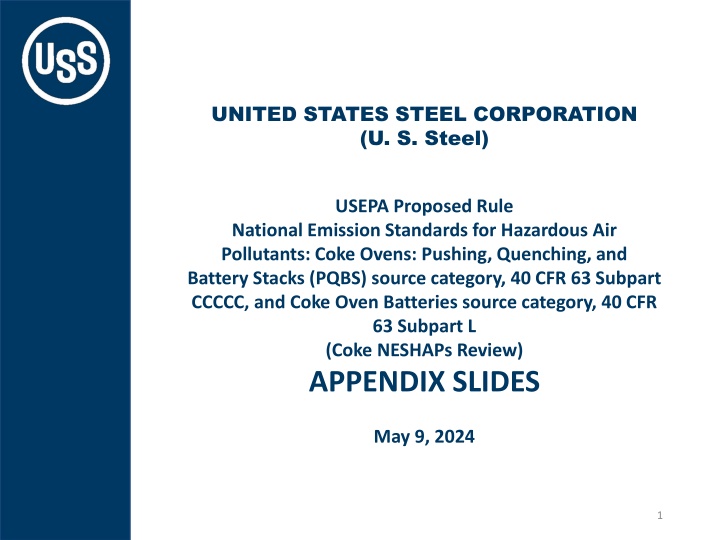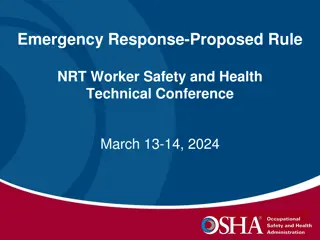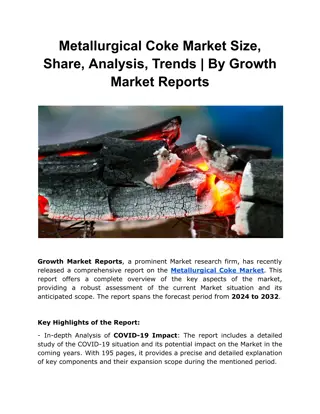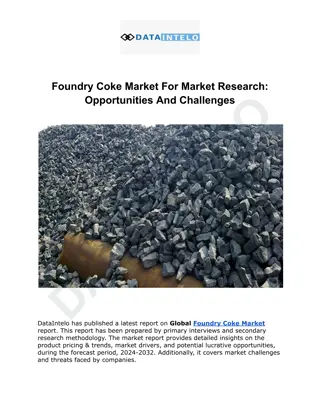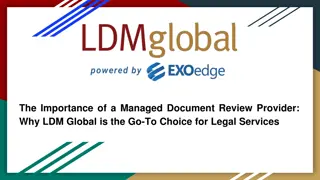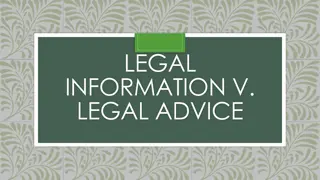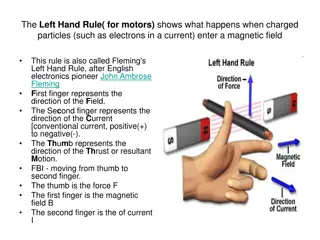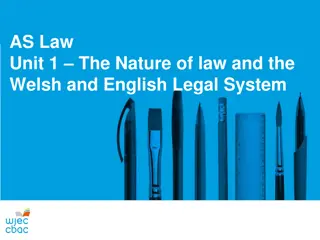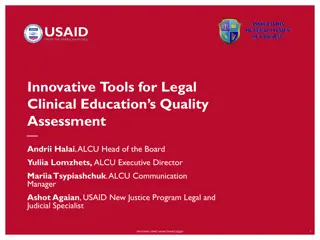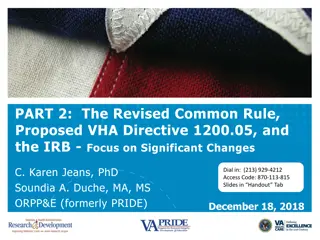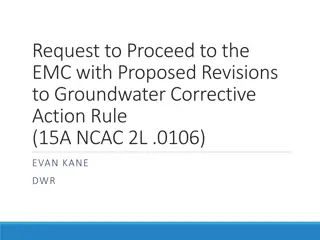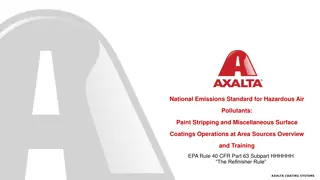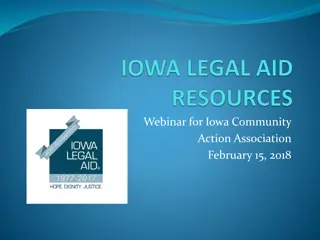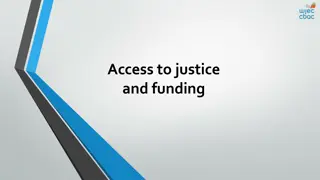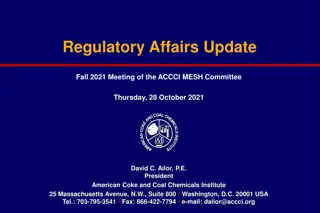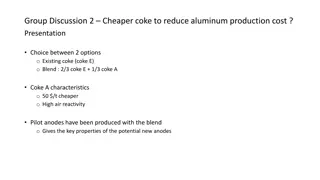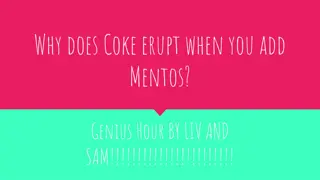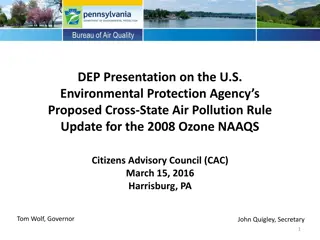Legal Background of USEPA Proposed Rule on Coke NESHAPs Review
The legal background of the USEPA Proposed Rule on Coke NESHAPs Review focuses on setting emission standards for hazardous air pollutants emitted from coke ovens, pushing, quenching, and battery stacks, in compliance with the Clean Air Act. The rule addresses the residual risk and technology review, including new hazardous air pollutant limits and the obligations of the EPA as determined by court opinions and regulations under the Clean Air Act Section 112.
Download Presentation

Please find below an Image/Link to download the presentation.
The content on the website is provided AS IS for your information and personal use only. It may not be sold, licensed, or shared on other websites without obtaining consent from the author.If you encounter any issues during the download, it is possible that the publisher has removed the file from their server.
You are allowed to download the files provided on this website for personal or commercial use, subject to the condition that they are used lawfully. All files are the property of their respective owners.
The content on the website is provided AS IS for your information and personal use only. It may not be sold, licensed, or shared on other websites without obtaining consent from the author.
E N D
Presentation Transcript
UNITED STATES STEEL CORPORATION (U. S. Steel) USEPA Proposed Rule National Emission Standards for Hazardous Air Pollutants: Coke Ovens: Pushing, Quenching, and Battery Stacks (PQBS) source category, 40 CFR 63 Subpart CCCCC, and Coke Oven Batteries source category, 40 CFR 63 Subpart L (Coke NESHAPs Review) APPENDIX SLIDES May 9, 2024 1
USEPA Proposed Rule: Coke NESHAPs Review Legal Background - EPA Coke NESHAPs Residual Risk and Technology Review Rulemaking April 21, 2020: U.S. Court of Appeals for the D.C. Circuit opinion in LEAN v.EPA (No. 17-1257) held that EPA has an obligation to set standards for emitted unregulated pollutants as part of technology reviews under CAA section 112(d)(6). [T]he Act is best read to require any underinclusive emission standards be revised as necessary to comply with section 112(d)(2)-(3) during the eight-yearly review set by section 112(d)(6). LEAN at 1099. Unregulated pollutants are subject to section 112(d)(2)-(3) standard of review. Regulated pollutants subject to section 112(d)(6) standard of review 2
USEPA Proposed Rule: Coke NESHAPs Review Legal Background - New HAP Limits - Clean Air Act Section 112(d) (2)STANDARDSANDMETHODS Emissions standards promulgated under this subsection and applicable to new or existing sources of hazardous air pollutants shall require the maximum degree of reduction in emissions of the hazardous air pollutants subject to this section (including a prohibition on such emissions, where achievable) that the Administrator, taking into consideration the cost of achieving such emission reduction, and any non-air quality health and environmental impacts and energy requirements,determines is achievable for new or existing sources in the category or subcategory to which such emission standard applies, through application of measures, processes, methods, systems or techniques including, but not limited to, measures which (A) reduce the volume of, or eliminate emissions of, such pollutants through process changes, substitution of materials or other modifications. (B) enclose systems or processes to eliminate emissions, (C) collect, capture or treat such pollutants when released from a process, stack, storage or fugitive emissions point, (D) are design, equipment, work practice, or operational standards (including requirements for operator training or certification) as provided in subsection (h), or (E) are a combination of the above. 3
USEPA Proposed Rule: Coke NESHAPs Review Legal Background - New HAP Limits - Clean Air Act Section 112(d) (3) NEWANDEXISTINGSOURCESThe maximum degree of reduction in emissions that is deemed achievable for new sources in a category or subcategory shall not be less stringent than the emission control that is achieved in practice by the best controlled similar source, as determined by the Administrator. Emission standards promulgated under this subsection for existing sources in a category or subcategory may be less stringent than standards for new sources in the same category or subcategory but shall not be less stringent, and may be more stringent than (A) the average emission limitation achieved by the best performing 12 percent of the existing sources (for which the Administrator has emissions information), excluding those sources that have, within 18 months before the emission standard is proposed or within 30 months before such standard is promulgated, whichever is later, first achieved a level of emission rate or emission reduction which complies, or would comply if the source is not subject to such standard, with the lowest achievable emission rate (as defined by section 7501 of this title) applicable to the source category and prevailing at the time, in the category or subcategory for categories and subcategories with 30 or more sources, or 4
USEPA Proposed Rule: Coke NESHAPs Review Legal Background - New HAP Limits - Clean Air Act Section 112(d) (B) the average emission limitation achieved by the best performing 5 sources (for which the Administrator has or could reasonably obtain emissions information) in the category or subcategory for categories or subcategories with fewer than 30 sources. EPA is required to follow the CAA which requires EPA to set MACT standards that are based on limits in the industry that have been demonstrated to be achievable. There are no existing limitations for the new proposed HAPs nor are controls installed for any of the iron and steel sources. Nowhere has EPA shown that any coke source category has demonstrated that the proposed new HAP emission limits are achievable. By setting standards in a way that is contrary to the Clean Air Act without ever having shown that the standards are indeed achievable, EPA is setting the industry up for failure. 5
Bi-partisan Senators Call on EPA to Reject Proposed EPA Rules that Would Dramatically Undermine America s Steel Industry U.S. Senators J.D. Vance (R-OH), Mike Braun (R-IN), Joe Manchin (D-WV), Bob Casey (D- PA), Amy Klobuchar (D-MN), Shelley Moore Capito (R-WV), and Todd Young (R-IN) joined Senator Sherrod Brown (D-OH) in sending the letter to EPA Administrator Michael Regan. In the letter, the senators write that the United States is the cleanest major steel producer in the worldand that the proposed rules would force American steel production to move overseas to countries with lower pollution standards. The senators specifically wrote about three proposed rules related to steel manufacturing and production: 1.National Emission Standards for Hazardous Air Pollutants: Integrated Iron and Steel Manufacturing Facilities (EPA-HQ-EPA-OAR-2002-0083), 2.National Emission Standards for Hazardous Air Pollutants for Coke Ovens: Pushing, Quenching, and Battery Stacks, and Coke Oven Batteries. (EPA HQ OAR 2002 0085 and EPA HQ OAR 2003 0051), and 3.National Emission Standards for Hazardous Air Pollutants: Taconite Iron Ore Processing Amendments (EPA-HQ-OAR-2017-0664). 6
Congressional Steel Caucus Chairman & Vice Chairman Write to Administrator Regan to Express Concern with Proposed EPA Rules U.S. Members of Congress, Republican Eric A. Rick Crawford, Chair, Congressional Steel Caucus and Democrat Frank Mrvan, Vice-Chair, Congressional Steel Caucus sent a letter to EPA Administrator Michael Regan encouraging the EPA to ensure the proposed requirements are based on proven technology and robust scientific data. And that, It is essential to ensure that proposed rules are technically feasible, financially reasonable, and continue protecting the livelihoods, health, and safety of workers and steel-producing communities throughout our nation. The congressmen specifically wrote about proposed rules related to steel manufacturing and production: 1.National Emission Standards for Hazardous Air Pollutants: Taconite Iron Ore Processing Amendments (EPA-HQ-OAR-2017-0664) 2.National Emission Standards for Hazardous Air Pollutants: Integrated Iron and Steel Manufacturing Facilities (EPA-HQ-EPA-OAR-2002-0083) 3.National Emission Standards for Hazardous Air Pollutants for Coke Ovens: Pushing, Quenching, and Battery Stacks, and Coke Oven Batteries. (EPA HQ OAR 2002 0085 and EPA HQ OAR 2003 0051) 7
USEPA Proposed Rule: Coke NESHAPs Review Summary of Requests for OMB to Direct EPA: To develop HAP limits that are necessary and required (per LEAN); economically and technologically feasible and achievable. To include variability factors when setting HAP limits to recognize different coking processes and coal constituents. To use robust leak rate data sets if adjusting leak rate limits. To remove the subcategorization standard for doors based on coke production capacity And, to remove the Fenceline monitoring requirement or, in the alternative, require EPA to focus on coke oven batteries and not other sources; raise the benzene action level to address allowable emissions; and provide a sunset provision. 8
